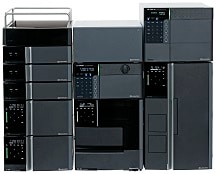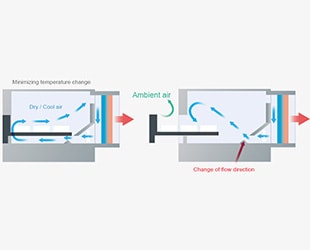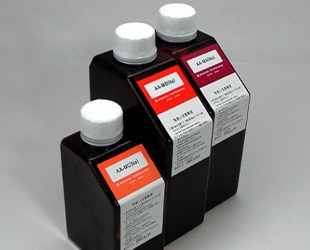Nexera Amino Acid Analysis System
Nexera Post-column Amino Acid Analysis System

Amino acid analysis occupies an important role in diverse fields, such as food science and pharmaceutical manufacturing. The Nexera Amino Acid Analysis System uses detection by post-column fluorescence derivatization, with o-phthalaldehyde (OPA)/N-acetylcysteine as the reaction reagents, to selectively and sensitively quantitate the amino acids contained in samples have the complex matrix.
Amino acid analysis is applied to the elucidation of peptide and protein structure. As amino acids are essential nutrients that comprise the proteins in the human body, the amino acid analysisis particularly useful for detecting imbalances, deficiencies and metabolic conditions. Amino acid analysis is frequently utilized to identify conditions like aminoaciduria – an inborn error of amino acid metabolism – and urea cycle defects. Key to investigating several inherited metabolic diseases, particularly those involving unexplained seizures, amino acid tests of the cerebrospinal fluid (CSF), blood and/or urine are incredibly useful diagnostic tools. Further to this, the high sensitivity afforded by amino acid analysis makes it invaluable in the fields of food science and pharmaceuticals, where the capabilities are used to manage quality control in the production of food and drugs.
The process of amino acid analysis involves hydrolyzing the peptide bonds before the analysis. Shimadzu’s Nexera Amino Acid Analysis system is designed to deliver precise quantification of amino acids in complex samples and integrates high-performance liquid chromatography (HPLC) and specialized consumables. The instruments selectively detect amino acids based on Shimadzu’s acclaimed post-column reaction technology and high-sensitivity fluorescence detectors. The instruments also boast superb injection precision over a wide range of volumes and a unique design that ensures reliable sample cooling.
Features
-
Selectively detects amino acids based on Shimadzu's highly acclaimed post-column reaction technology and high-sensitivity fluorescence detector.
-
- Superb injection precision over a wide range of volumes
- Unique design to ensure reliable sample cooling -
In terms of the mobile phase, the pH must be carefully prepared in order to obtain separation repeatability in amino acid analysis.
News / Events
-
New Technical Report is available, Optimization of Supercritical Fluid Extraction Parameters for Vitamins D2, D3, and K1 from Pharmaceutical Preparations
New Technical Report is available, Optimization of Supercritical Fluid Extraction Parameters for Vitamins D2, D3, and K1 from Pharmaceutical Preparations
-
New Tips & Tricks is available, Automated Dilution and Preparation of Standard and Sample Solutions for Analysis
-
Shimadzu Corporation has released LabSolutions Detect, a software with AI Functionality to support Anomaly Detection for Liquid Chromatographs (LC).
LabSolutions Detect transforms your LC data review process by visualizing differences between accumulated reference data and daily sample data.
-
New Technical Report is available, A sustainable analytical approach for detecting extra virgin olive oil adulteration using Nexera™ UC
In this study, a fast, simple and green methodology was optimized to detect intentionally adulterated extra virgin olive oil EVOO with cheaper seed oils at different levels by means of subcritical fluid chromatography (subFC) with UV detection, followed by statistical analysis.
-
Shimadzu has released the new integrated LC system, i-Series.
The new i-Series integrated LC: Sustainable design. Reliable results. Uncompromising performance.
-
Core-shell Column: Analysis Basics Now Available.
Discover easy-to-understand insights into the fundamentals of analysis.








